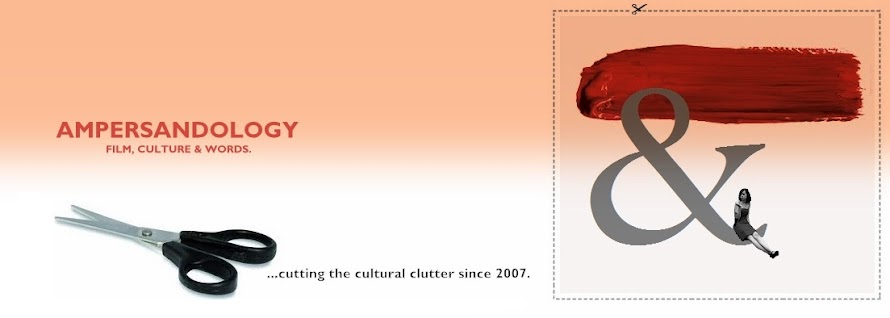by Jillian Butler, Ampersandology
Oh, and you better believe that religion gets a healthy treatment. The Gothic, after all, delights in breaking down the stalwart pillars of community authority into demented caricatures of human desire, echoing what most of us probably suspect anyway: the lawmakers are corrupt, our parents are out to get us and most tellingly, priests and religious leaders are usually the most morally bankrupt. There are a staggering number of Gothic representaions of religious faith and its corruptive nature, from the frightening Bible-thumping mother in Carrie (1975) to the cult Satanists in Rosemary's Baby.
 |
| Goya-a-go-go. |
Do you feel uncomfortable? Unsettled? The Gothic is pleased. It milks the grotesque; it is horrific and terrifying pleasing. The Gothic turns the familiar into the threatening, and delights in making what we think of as safe, virtuous constructs of society into dark reflections. It's here to tear down the social structure.
Beware False Prophets
.jpg) |
| Carrie; this film still freaks me out. |
But if you never want to sleep again, look no further than The Night of the Hunter. Robert Mitchum plays a self-appointed preacher, the creepiest zealot this side of the Tea Party--he performs his wicked mission with a righteous conviction, and looms over every frame with the omnipotence of the heavenly powers he claims to channel.
 |
| The pillar of evil: Robert Mitchum in The Night of the Hunter. |
The preacher is an unsettling force of demented will, believing he has Holy Orders to manipulate, murder and rob poor widows so that he has enough cash to continue spreading his good word. That he hates women is obvious--his distaste and clenched fists during a girlie striptease telegraphs as much, let alone his caveman-like treatment of the marital bed --but he also seems to have a deeper rage at the hypocritical nature of community. Part of his aim, it seems, is to destroy these families who are built on lax, easygoing religious discipline and permissive child-rearing. It's worth nothing that he's helped in large part by the expectations of the community that surround Shelley Winters' widow--pushing her to remarry, because children have to be raised by two parents. after all, even if one of them is a raging pot of crazy-sauce.
Everything is black and white in The Night of the Hunter, and vividly so: Mitchum is most often back-lit or else in shadows, and the effect is of a dark pillar of immovable conviction in a field of innocuous flora Observe, if you will, the divine visual callbacks to German expressionism of the early 1920s, which produced such Gothic standards as M (1931) and The Cabinet of Dr. Caligari (1920). Charles Laughton, tragically, never directed another film after this one, but he certainly had a flair for the Gothic.
The Kids Aren't Alright
 |
| The Omen. |
Oh, and children? The Gothic does the most deliciously dark things to children, perhaps because by corrupting such undisputed makes for an unsettlingly creepy subtext about the futility of society itself. There was a wave of demonic child movies in rotation in the late 1960s and early 1970s, many of which I've already mentioned.
What is that all about? The only thing I can guess is that in the last 100 years or so, the idea of childhood in the Western world has become something more like a right. Everyone deserves a happy childhood, the parents cluck, when it's troubling to think that even 150 years ago there weren't even child labour laws. Children were more like tiny adults.
What is that all about? The only thing I can guess is that in the last 100 years or so, the idea of childhood in the Western world has become something more like a right. Everyone deserves a happy childhood, the parents cluck, when it's troubling to think that even 150 years ago there weren't even child labour laws. Children were more like tiny adults.
The demonic child in film may just be some kind of subconscious play on these assumptions of sacred childhood. Because really. Nothing is creepier than evil, unblinking children, whether they're creatures of the night or spawn of Satan. It goes against nature for children to be sinister, and makes the innocence of childhood seem like an urban legend we tell ourselves to feel safe.
It works both ways: Claudia in Interview with the Vampire starts out as a fairly straightforward corruption of childhood: she is a little girl driven by blood lust, and the cues of these undead desires are almost coded as the coquettish desires of a budding sexuality; she persuades her de facto fathers with girlish pouting and borderline seduction. Little Claudia always gets her way.
But Claudia is incapable of growing up and realizing the fruits of that sexuality, so to speak, and here is where the Gothic takes it one level deeper: the longer Claudia's existance as a vampire condition, the more her mind ages. Her body remains child-like while her desires are of fully grown woman. That subtext of trapping a grown woman's mind and desires into a doll-like eternal child isn't explored fully, but it remains pretty much the only reason to watch Interview With the Vampire. Claudia's plight is so. Very. Troubling.
And don't think I forgot the Grady Twins in the Hallway from Kubrick's 1980 The Shining. Children don't get any creepier. WHY CAN'T I LOOK AWAY?
Happy Hallow's Eve, dear readers. And help yourself to the Gothic.
*
Still up for a dose of perversity? Ampersandology's YouTube playlist: A Gothic Preoccupation.
Have a suggestion for a future Ampersandology topic? Got something
you’d like to say? All feedback welcome! Shoot us an email at ampersandology@gmail.com, or follow Ampersandology on Facebook.

No comments:
Post a Comment